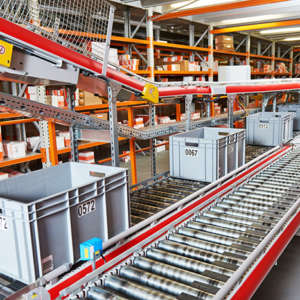It’s a time-honored tradition in the world of logistics: after the holiday decorations are all taken down and the last of the cookies are eaten, the season of returns begins. Brick and mortar retailers are used to post-holiday returns, but for online retailers, this season increasingly lasts all year. Reverse logistics–the complicated science of feeding goods back up the pipeline–has long been a source of frustration for retailers, but the advent of online shopping has hugely increased the number of returned goods and the costs associated with them. According to research from IHL Group, returned items that must be discounted or can’t be resold cost the average retailer 4.4 percent in lost revenue. Managing returned goods without taking a substantial revenue loss is a massive challenge, but it can be managed through the use of finely-tuned processes, creative thinking, and the expertise of logistics professionals.
A December CBRE report put some numbers to the recent, widely-acknowledged uptick in returns. For traditional retailers, returns comprise 8 percent of total sales, but online shoppers return merchandise at rates of up to 15 to 30 percent. Many customers acknowledge that they sometimes buy two pairs of shoes, for instance, planning to keep whichever pair fits better, but most business models don’t account for this kind of behavior. The problem becomes serious when combined with mounting labor and transportation costs, pressure to keep shipping fees at a minimum, and a marketplace in which goods rarely hold their value for long.
The challenge of returns is threefold: they are labor-intensive, space-intensive, and time-intensive. First, returned merchandise can arrive in a wide range of conditions: untouched and ready for restocking, with damaged packaging, or in a state that requires the goods to be either repaired or destroyed. To account for this, employees need precise guidelines governing how to deal with each type of merchandise, instead of trying to figure it out on their own. Unpacking, examining, and re-shipping returns also takes space, which poses a particular challenge in the current moment, in which warehouse space is expensive and increasingly hard to come by. Every person who touches a returned good increases its cost, meanwhile the value of the good is rapidly decreasing with each passing day. Fast fashion merchandise has the fastest rate of depreciation (20 to 50 percent value loss over two to four months), but nearly all goods start losing value from the moment they leave shelves.
Despite the significant costs incurred by businesses to handle returns, customers increasingly expect the process to come at no charge to them. One survey found that 86 percent of shoppers consider ease of return a top factor in choosing where to buy, and 81 percent say they will go elsewhere if unhappy with the return process. From a seller’s point of view, the best case scenario for a return is that the customer brings it back to a brick and mortar location, where it can be immediately restocked, and where they stand the best of chance of making a further sale. (The International Council of Shopping Centers claims that in-store returns typically result in a new sale that is 107 percent the value of the returned item.) However, the situation is obviously more complicated for online purchases.
So how can retailers reduce the costs and uncertainty of returns while giving customers the experience they demand? Some businesses are experimenting with creative solutions, including offering a discount to customers who give up the right to return their merchandise. Others save themselves the trouble of handling returned merchandise, and let customers keep them, plus the item’s value in store credit. Some businesses cut around the issue of returns altogether with solutions tailor-made to their specific business; Warby Parker, for example, lets customers try on several pairs of sample glasses frames, so they only order the ones they plan to keep. There are the classic options of selling returns at a discount, or selling them in bulk to liquidators. Finally, there is the “nuclear option” of sending unwanted goods to the dump, which amounts to a total loss for businesses, yet is a surprisingly common solution.
At the end of the day, the right returns process is the one that is most precisely tuned to the specifics of a company and particular SKU. To determine the appropriate destination for returned goods, and how much further labor costs they are worth, it’s vital to have market data as to that product’s likelihood of a successful resale. This is another case in which big data can deliver valuable insights and direct resources most effectively. Many retailers are also outsourcing their reverse logistics operations to their 3PL providers, who can use their existing space and personnel to handle inventory spikes without having to scramble to find warehouse space and laborers. As one logistics professional told Transport Topics: “[3PLs] usually have established relationships with carriers and economies of scale that can be useful when negotiating rates. They also are likely to have established distribution facilities near end customers, so they can minimize transportation costs and process returns more quickly to ensure customer satisfaction.” Reverse logistics will increasingly be a standard part of supply chain management as long people continue to shop online, buy the wrong size shoes, and be dissatisfied with each other’s holiday gifts.
If you have questions or want to talk about your reverse logistics program, please give us a call or reach out to us via email. We are here to help.



